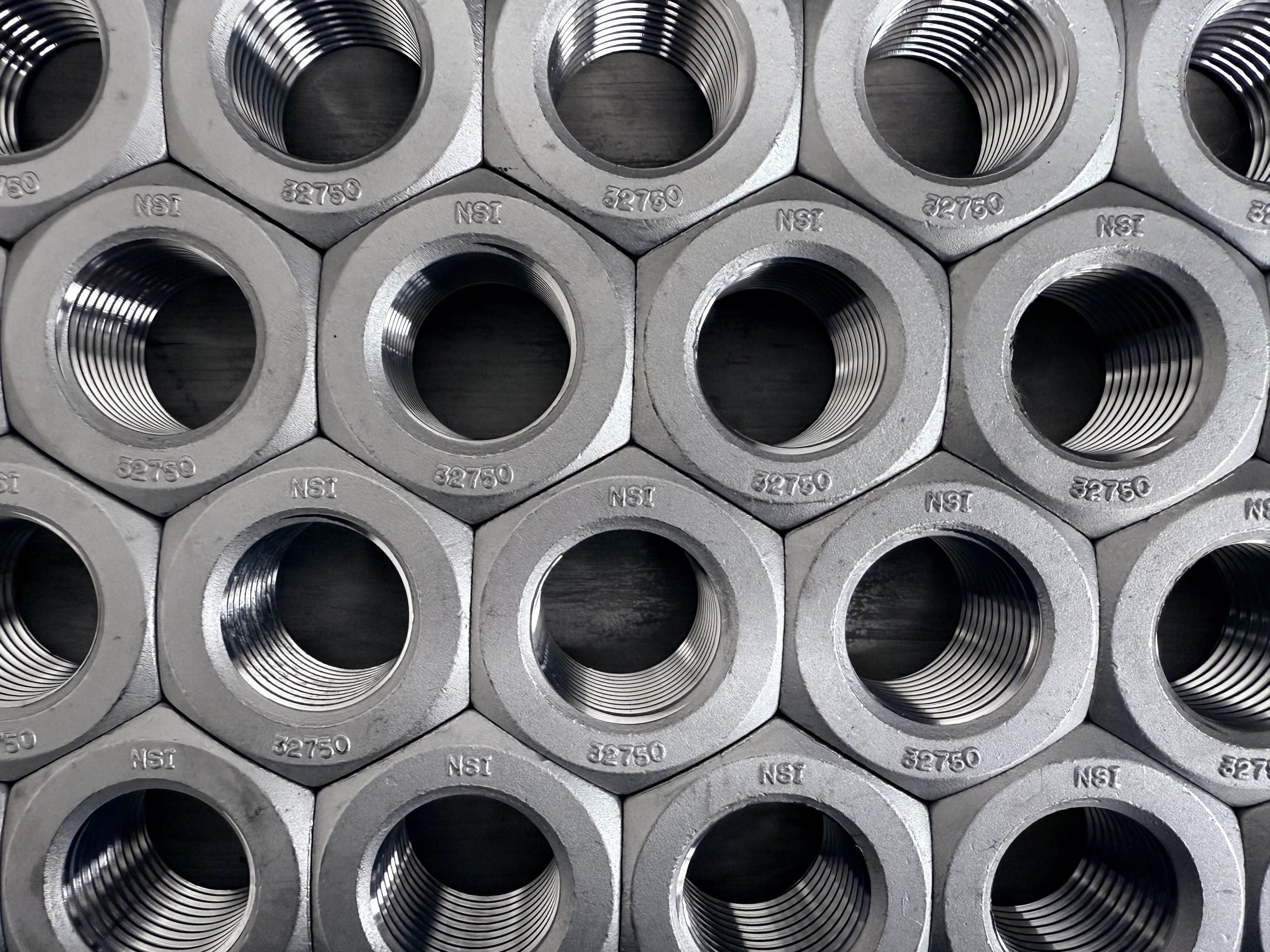Specifications
- Plate, Sheet & Strip: ASTM A240
- Rod & Bar: ASTM A479

As in-service temperature levels have been raised over time, the importance of 310 has increased. Chromium content contributes to heat resistance. However, straight chromium grade stainless steels (400 series) are only effective up to 1250º F (700º C). Austenitic grades, particularly 347 Stainless and 316 Stainless are used in environments up to 1600º F (850º C). 310 Stainless fasteners are used where temperatures may reach 2000º F (1100º C).
A .25% maximum carbon content is permissible in 310 Stainless. When carbon content is held under .08%, the material qualifies as 310S Stainless. In practice, most heat lots of 310 qualify as 310S.
If your question isn’t answered below, download the technical data sheet here.
This technical data is specifically related to AerMet® 310 produced by Carpenter Technology. For more information, visit the Carpenter Technology website. If you require this specific material for your project, you must request it at the time of quotation.
| Density | Specific Heat | Electrical Resistivity | Modulus of Elasticity | Melting Range | Thermal Conductivity | |
|---|---|---|---|---|---|---|
| Imperial | 0.285 Ibs/in3 | 0.12 BTU/lb-°F (32 – 212°F) | 30.7 Microhm-in at 68°F | 28.5 x 106 psi | 2470 – 2555°F | 8.0 BTU/hr/ft2/ft/°F |
| Metric | 7.89 g/cm3 | 502 J/kg-°K (0 – 100°C) | 78.0 Microhm-cm at 20°C | 196 GPa | 1354– 1402°C | 10.8 W/m-°K |
| Temperature, °F | 1000 | 1200 | 1400 | 1600 | 1800 | 2000 |
| Coefficient* of Thermal Expansion, in/in°F x 10-6 | 9.5 | 9.8 | 10.05 | 10.15 | 10.3 | 10.6 |
| Thermal Conductivity, Btu • ft/ft2 • hr • °F | 13.6 | 15.2 | 16.8 | 18.4 | 20.0 | – |
| Modulus of Elasticity Dynamic, psi x 106 | 23.0 | 21.8 | 20.5 | 19.2 | – | – |
| Yield Strength 0.2% Offset | Ultimate Tensile Strength | Elongation in 2 in. | Hardness | ||
|---|---|---|---|---|---|
| psi (min.) | (MPa) | psi (min.) | (MPa) | % (min.) | (max.) |
| 35,000 | 245 | 80,000 | 550 | 45 | 217 Brinell |
| Temperature, °F | 1000 | 1200 | 1400 | 1600 |
| Ultimate Tensile Strength, ksi | 67.8 | 54.1 | 35.1 | 19.1 |
| 0.2% Yield Strength, ksi | 20.8 | 20.7 | 19.3 | 12.2 |
| Elongation, % | 47 | 43 | 46 | 48 |
| Environment | Operating Temperature |
|---|---|
| Oxidizing conditions (max sulfur content – 2 g/m3) | 1922°F (1050°C) continuous service |
| 2012°F (1100°C) peak temperature | |
| Oxidizing conditions (max sulfur greater than 2 g/m3) | 1742°F (950°C) maximum temperature |
| Low oxygen atmosphere (max sulfur content – 2 g/m3) | 1832°F (1000°C) maximum temperature |
| Nitriding or carburizing atmospheres | 1562 – 1742°F (850 – 950°C) maximum |
|
Temperature
|
Creep Strain (MPa)
|
Creep Rupture (MPa)
|
|||||
|---|---|---|---|---|---|---|---|
|
°C
|
°F
|
1000 H
|
10000 H
|
100000 H
|
1000 H
|
10000 H
|
100000 H
|
|
600
|
1112
|
120
|
100
|
40
|
200
|
140
|
80
|
|
700
|
1292
|
50
|
35
|
20
|
80
|
45
|
20
|
|
800
|
1472
|
20
|
10
|
8
|
35
|
20
|
8
|
|
900
|
1652
|
10
|
6
|
3
|
15
|
10
|
5
|
|
1000
|
1832
|
5
|
3
|
1.5
|
9
|
4
|
2
|
Check out our sample products for 310 Stainless Steel:
